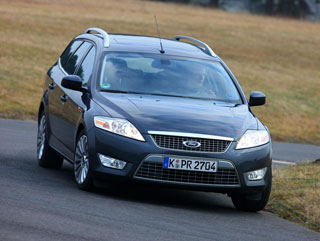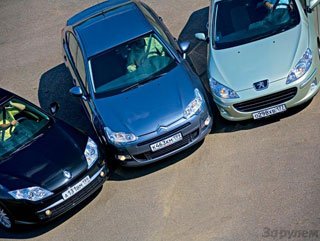PEUGEOT 407 test drive since 2004 sedan
Pezhim
 We were waiting for him. We can say that they were waiting. Indeed, since the debut of the previous model 406, nine years have passed the term for current standards is considerable. Waited and wondered: what will PEUGEOT 407 be? What appearance will take, how will he go? True, the French threw some tips themselves: for example, in September last year, they brought a concept with the unambiguous name 407 Elixir to the Frankfurt car dealership.
We were waiting for him. We can say that they were waiting. Indeed, since the debut of the previous model 406, nine years have passed the term for current standards is considerable. Waited and wondered: what will PEUGEOT 407 be? What appearance will take, how will he go? True, the French threw some tips themselves: for example, in September last year, they brought a concept with the unambiguous name 407 Elixir to the Frankfurt car dealership. We were waiting for him. We can say that they were waiting. Indeed, since the debut of the previous model 406, nine years have passed the term for current standards is considerable. Waited and wondered: what will PEUGEOT 407 be? What appearance will take, how will he go? True, the French threw some tips themselves: for example, in September last year, they brought a concept with the unambiguous name 407 Elixir to the Frankfurt car dealership. As it turned out a few months later, a very close in spirit to a serial car. On the other hand, a visual indicator of the path along which the development of the Peugeot brand is the family 307. The avant -garde design, the interior of German ergonomics and the German quality plus generous equipment in accordance with these postulates should be created a new sedan of the D.
One and a half billion dollars invested in the development of the 407 model and the preparation of the head enterprise in Renna for its production will impress anyone, even the true oligarch. This figure involuntarily overestimates the bar of expectations, promising something very special. The first official photos did not deceive: indeed something special! The sedan of sports appearance, which cling to the ground, captivates with its rapid energy. He rushes even standing still. It has something unconditionally thoroughbred, but this is no longer a purely French breed. Personally, the model 407 stubbornly suggests me about the non -existent four -door version of the Ferrari 456 GT compartment. Cars drawn by the masters of the Atelier Pininfarina, with which Peugeot itself has been cooperating for more than half a century. However, this time the French persistently retire from their Italian partners, attributing the design of the new model exclusively to their own authorship. I do not believe!
Undoubtedly, this car has its own person who is memorable once and for all. Let's start with the silhouette. If you look at the profile, the windshield is perceived as the continuation of the hood line that it seems to be the air from the asphalt in the PEUGEOT 407 movement. The layout of the machine is described by the term Cab Forward, that is, the salon displaced to the front axle. This term was invented by the Marketologists of the Chrysler Corporation at the time of the LH family's debut (Chrysler Concorde, Dodge Intrepid and Eagle Vision) in 1992. For the sake of historical justice, it must be mentioned that machines of such a layout were produced before in particular the rear-engine Chevrolet Corvair of 1960 or the NSU RO-80 of 1967. According to a similar scheme, PEUGEOT 405 and 605 were built in the late eighties. What are the advantages of the Cab-Former? A more spacious interior, roomy trunk, the possibility of using a complex rear suspension and a thinner study of the energy -absorbing zones of the nasal part of the machine. Yes, the front overhang is bulky, creating the illusion that the motor hangs in front of the front axle. In fact, this is not so: the engine is located directly above the drive wheels.
 No less interesting is Peugeot 407 and when studying near. A huge front bumper performs decorative and aerodynamic functions, without protecting the car from damage: if that, the frontal blow will have to be straight in the open mouth of the air intake. By the way, during the winter period, half of this mouth is closed with a special plastic plate. Block fractions of the most complex profile flow into the front wings, and vertical foglights are shifted to the very edges of the bumper. Ordinary wipers are not able to effectively clean the colossal area of \u200b\u200bthe windshield, so the swing scheme is used here, which is found on many compact and minivans.
No less interesting is Peugeot 407 and when studying near. A huge front bumper performs decorative and aerodynamic functions, without protecting the car from damage: if that, the frontal blow will have to be straight in the open mouth of the air intake. By the way, during the winter period, half of this mouth is closed with a special plastic plate. Block fractions of the most complex profile flow into the front wings, and vertical foglights are shifted to the very edges of the bumper. Ordinary wipers are not able to effectively clean the colossal area of \u200b\u200bthe windshield, so the swing scheme is used here, which is found on many compact and minivans. In the front doors in the manner of model 307, fixed glass triangles are provided, which required the transfer of external mirrors closer to the central stands of the body. And the rear doors with a parallelogram littered back in the form are absolutely original and at the same time practical: they facilitate the planting and ease of passengers. Contrary to the decent wheeled wheelbase, the supply of space in the legs of the rear riders can not be called record, but the sloping roof hangs over their heads. However, there is no talk of any constraint.
The lower part of the body is visually reinforced by embossed thresholds that encircle the car around the perimeter. I also note the door handles for the natural grip, subconsciously working to increase the status of the machine. With the back, not everything is so clear: the 407th model has lost the individuality characteristic of all modern Peugeot, and began to be like either Audi A4, or on Chrysler Sebring. The trunk lid opens only with the button on the key, regularly forcing the motor
Inside the bells and whistles are an order of magnitude less, but the order is present in everything. Positive German influence is evident. It is visible in expensive soft plastic, in the elegant design of the dashboard, in the fundamentalism of the central console, and the geometric rank of buttons. The quality of the finish has increased sharply: there were inserts for aluminum and chrome edges of various elements. The German school is also felt in chairs tough, with developed support. There are enough containers under a trifle in the cabin: this is a box in the armrest and a bottomless glove compartment. Plus a retacence cup holder near a handbrake. Some original features have been preserved. The head light is controlled by the left steering wheel switch, an additional right-based CD reserve. Adjusting the angle of the back of the seat in the Japanese style: stepped, with a latch.
Non -trivial architecture of the body demanded its victims. Highly inclined front racks limit visibility on the sides, and in order to see the picture in unusually located mirrors, you have to twist your head more. The nose of the car is not visible at all from the driver's place. There is experience here.
 Is it time? So, it's time to reanimate the skills of a smooth touch from a place. A 1.8-liter motor with a shortage of torque at the bottom, coupled with a long clutch pedal, is forced to be careful. In any case, at first. But further the engine does not indulge in particular traction first of all, due to stretched gear rates. Yes, and the large moves of the gearbox lever do not reduce the acceleration time. In general, everything turns out very calmly and measuredly. The brakes also fit into this concept: the intensity of deceleration depends on the depth of the pedal. And before the start of the ABS, the brake pedal manages to leave very deeply.
Is it time? So, it's time to reanimate the skills of a smooth touch from a place. A 1.8-liter motor with a shortage of torque at the bottom, coupled with a long clutch pedal, is forced to be careful. In any case, at first. But further the engine does not indulge in particular traction first of all, due to stretched gear rates. Yes, and the large moves of the gearbox lever do not reduce the acceleration time. In general, everything turns out very calmly and measuredly. The brakes also fit into this concept: the intensity of deceleration depends on the depth of the pedal. And before the start of the ABS, the brake pedal manages to leave very deeply. Traditional Korse of Peugeot Car Management. The 407th model is especially good in high-speed rumbous turns. The machine combines excellent stability in direct with the ease of changing the course and with the same ease again acquires a dynamic balance in a bend. The steering wheel is quite sharp, poured with feedback. Only some propagation of reactions and the obvious steering of the rear axle, due to the suspension settings, but the lateral departments of high -profile tires, are annoying. ESP, disconnected only at speeds up to 50 km/h, works reliably, but its soft sidebags are forced to sweat. Having barely extinguished the nascent skid, ESP is immediately forced to stop the demolition of the front axle, which is the result of a sharp stabilization of the machine.
In the city of Peugeot 407, he did not present surprises: an ordinary car with a light wheel, except that unexpectedly maneuvered for such a solid front -wheel drive. That's just about the bow hidden from the eyes, do not forget: when turning, a pair of trifles can kiss with a cut. The smoothness of the move is typical for French cars: a short -flowing suspension does not notice small irregularities, but responds rigidly to large ones. Only relaxed, as the body nervously flinches on the next hole. But it is impossible not to praise noise insulation: neither the sound of the motor, nor aerodynamic whistles, nor the noise of the tires penetrate the salon.
The company Avtoevroservice, the Petersburg Peugeot dealer, for several days carried out demonstration test drives of cars in various performance on the Nevskoye Ring highway. Therefore, I did not fail to take this opportunity and grab several circles on modifications with a 2.2-liter engine and an automatic gearbox. I must say that she goes differently. Firstly, there are 17-inch wheels with low profile tires. Secondly, the suspension is configured in a more sports way. Thirdly, instead of conventional hydraulic power steering, electrohydraulic is used. There is no sense of the machine that the usual hydraulics provides, but it is imitated very realistic. PEUGEOT 407 2.2 ST Sport was pleased with scanty rolls, the lack of fine tanking of the body and the uniqueness of the feedback on the actions of the steering wheel. Accordingly, ESP in tense situations works once, not two. The impression was that the supply of energy intensity of the suspension is higher. If we talk about the machine, then this is already an obsolete four -speed unit, although equipped with a sequential switch mode. You do not expect agility from him, but in general it functions decently.
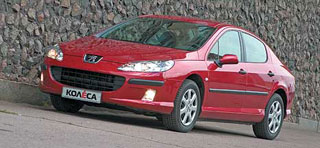 The six -cylinder Peugeot 407 V6 is a different planet. The 211-horsepower engine is equipped with a gas distribution phase adjustment system, a six-speed, Japanese machine gun, Aisin brands. The steering wheel amplifier is hydraulic, but with electronic control. An adaptive suspension with shock absorbers of variable stiffness is used here (9 of their operating modes are provided). Unfortunately, it was not possible to try such a car, but it is unlikely to be popular among Russian buyers at a price of forty thousand dollars. And in Europe, most of the PEUGEOT sold are equipped with diesel engines.
The six -cylinder Peugeot 407 V6 is a different planet. The 211-horsepower engine is equipped with a gas distribution phase adjustment system, a six-speed, Japanese machine gun, Aisin brands. The steering wheel amplifier is hydraulic, but with electronic control. An adaptive suspension with shock absorbers of variable stiffness is used here (9 of their operating modes are provided). Unfortunately, it was not possible to try such a car, but it is unlikely to be popular among Russian buyers at a price of forty thousand dollars. And in Europe, most of the PEUGEOT sold are equipped with diesel engines. The previous model 406 was in good demand with us: the figure of official sales for all years approaches ten thousand. The Peugeot 407 has a number of hopes, especially in the light of the radical reorganization of the presence of the French brand in our country. In mid -September, the PEUGEOT representative office in Moscow will begin work, which will take on the functions of the general importer, and the current importers will gain the status of dealers. And then fans are waiting for a whole series of new products. An extravagant station wagon 407 SW will come to Russian dealers. The next spring we should expect an updated family 307, immediately followed by a modernized flagship 607. And at the very beginning of 2006, sales of model 207 will begin.
But we will not run ahead. In the fall, Peugeot 407 will take part in the prestigious competition of the European car in 2005. In the piggy bank, the Lyon brand already has three titles, I think they are not averse to increasing the score. But even without a gold medal, the success of Peugeot 407 in Russia is guaranteed: many will buy such a machine, falling in love with its design. After all, this car is strikingly not like a dull majority of its classmates. At the same time, in addition to the dignitaries, Peugeot has other trump cards behind the soul: a bright advertising policy, a developed dealer network and the prevailing clientele. Fig on health!
Autography
Peugeot 407
Predecessor
406 (1995)
Premiere
march 2004
Prototype
407 Elixir (2003)
Platform
PSA 3 (Citroen C5/C6/Peugeot 407)
Engines
1.6-2.9 l (106-211 p.)
Production
France
Expected replacement
2011/12
The car is provided by Avtoevservis.
During the test, the car is insured by LLC Nation Center.
Text: Kirill Brevdo
Photo: Roman Ostanin


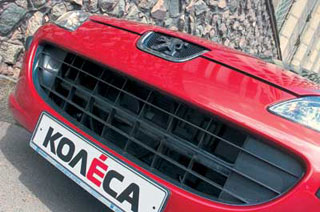


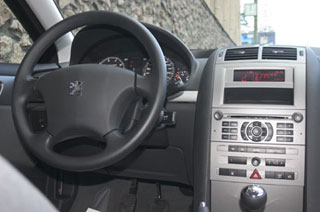
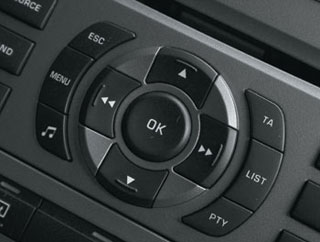
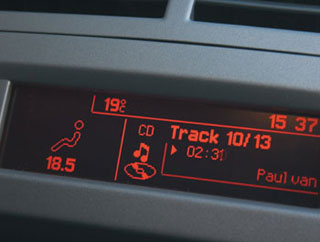
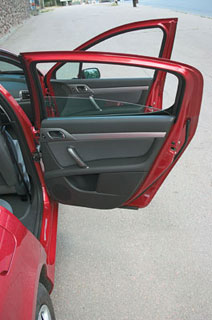
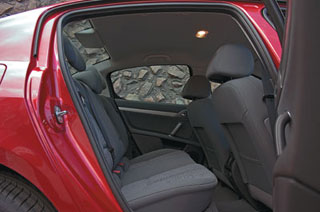
Source: Wheel magazine [No. 83/2004]
Video Crash tests Peugeot 407 since 2004
PEUGEOT 407 test drive since 2004
PEUGEOT 407 Crash Test since 2004
Krassh Test: Detailed Information34%
Driver and passengers
15%
Pedestrians
39%
Children-passengers







